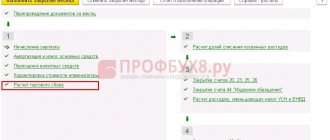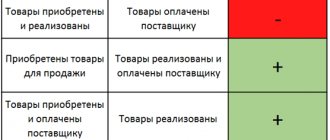Many auditors and accountants outright hate income tax reconciliations (i.e., reconciling the relationship between tax and accounting).
Why?
The main reason was that many do not understand the purpose of it. It's like a bunch of numbers and percentages that never add up to the right table.
Auditors' clients also hate this review, especially if they have complex transactions in their books, or there has been a tax rate change, or something else.
However, this task can save you a lot of time if you use the right sources of information and the right approach.
Procedure for conducting a desk tax audit
The procedure for conducting a desk audit is established by Art.
88 Tax Code of the Russian Federation. Taxpayers submitting profit returns should pay attention to the following provisions of this procedure. 1. Only the declaration submitted to the tax authority is subject to verification (Clause 1, Article 88 of the Tax Code of the Russian Federation). However, if the declaration is not submitted, the tax authority has the right to cameralically, within the same time frame, check information about the taxpayer using the sources available to it (clause 2 of Article 88 of the Tax Code of the Russian Federation).
2. The audit is carried out without a special decision of the head of the tax authority (clause 2 of Article 88 of the Tax Code of the Russian Federation) and without notifying the taxpayer.
3. The period for conducting a desk audit is 3 months from the date of submission of the declaration (clause 2 of Article 88 of the Tax Code of the Russian Federation).
4. Upon receipt of a declaration with a loss, errors, discrepancies and inconsistencies with other information are identified, the tax authority sends the taxpayer a request to provide explanations for the identified inconsistencies or to make appropriate corrections to the declaration (clause 3 of Article 88 of the Tax Code of the Russian Federation).
5. Explanations must be submitted to the tax authority in any way available to the organization within 5 working days from the date of receipt of the request (clause 3 of Article 88 of the Tax Code of the Russian Federation).
6. In support of the data included in the explanations, the taxpayer has the right to additionally provide accounting and tax registers, as well as any other documents (clause 4 of Article 88 of the Tax Code of the Russian Federation).
7. If during a desk audit the taxpayer submits an updated tax return for the audited period, then the period for the desk audit begins to count anew from the date of submission of the updated declaration (clause 9.1 of Article 88 of the Tax Code of the Russian Federation).
See “A clarification submitted after delivery of the act of the Commission will not prevent a decision on it .
8. If an updated declaration is submitted 2 years after the deadline established for the submission of these reports for the corresponding reporting (tax) period, and the tax accrued in it is in a smaller amount or the amount of the loss is increased, then the tax authority has the right to demand not only explanations, but also primary documents (clause 8.3 of article 88 of the Tax Code of the Russian Federation).
9. From taxpayers enjoying benefits, the tax authority has the right to request documents confirming the right to use such benefits (clauses 6 and 12 of Article 88 of the Tax Code of the Russian Federation).
If no violations are identified during the desk audit, the desk audit is automatically completed without drawing up any additional documents. If tax authorities identify errors and/or contradictions in the declaration, a special procedure for interaction between controllers and the taxpayer is then applied (see below).
Disputes often arise between taxpayers and the Federal Tax Service regarding income tax. Find out how the latest judicial practice on this issue is shaping up from the analytical collection from ConsultantPlus. Get trial access to the system and study the material for free.
Reasonability of loss
Losses can be caused by various circumstances. To prove their validity, it is worth stocking up on additional documents. The main thing is that it follows from them that the losses arose as a result of economic activities aimed at generating future income. Such evidence can be research, assessments, calculations, business plans, etc. All this is information about the development of the company’s activities. If there is no such information, then judges are unlikely to support an unprofitable company (Resolutions of the FAS Moscow District dated December 20, 2006 in case No. KA-A40/11661-06-P; FAS East Siberian District dated January 17, 2007 in case N А33-5877/05-Ф02-7258/06-С1).
We will tell you what documents you need to have in individual cases.
What should a taxpayer do if errors and contradictions are identified in the declaration?
If, despite the explanations provided and additional tax control measures, the tax authority considers a violation to have been identified, then within 10 working days from the date of completion of the audit it draws up a desk tax audit report. The report must be delivered to the taxpayer no later than 5 business days after the date of preparation.
Within 1 month, the taxpayer has the right to submit objections to the desk audit report. Objections must be considered by the head of the tax authority within 10 working days after the deadline for submitting objections. Based on the results of this review, a decision may be made to prosecute or refuse to prosecute. The head of the tax authority may also make a decision to extend the inspection period (for a period of no more than 1 month) and to carry out additional tax control measures.
Taking into account the above, it becomes obvious the importance of independently checking the profit declaration before submitting it to the tax authorities and the readiness to provide comprehensive explanations in response to a request from the tax authorities.
Find out how to calculate income tax here.
Selling goods below cost
Selling at a price below cost happens in the work of any organization. Here are the reasons why this might happen:
— the products were not in demand and were obsolete;
- goods (raw materials, materials) were purchased for the needs of the enterprise, but the need for them has disappeared. No profitable buyer was found;
— the product’s expiration date has expired;
- the customer refused the specific products produced according to his order. No other buyer was found;
— inventory balances were sold due to reorganization, liquidation, change of location or due to a change in the direction of the company’s activities.
The justification of costs in all such cases can be confirmed by an act of the inventory commission and a manager’s order issued on its basis to reduce prices.
The act must indicate:
— characteristics, properties and quality of the product;
- for what reasons it cannot be sold at a profit;
— the commission’s conclusions about reducing the price of the product.
Key points of income tax audit
Let us dwell on the most important points that occur when checking income taxes for most organizations. We provide links to the lines of the profit declaration in relation to its form, approved by order of the Federal Tax Service of Russia dated September 23, 2019 No. ММВ-7-3/ [email protected]
1. If the declaration is filled out manually, it must be checked for the absence of arithmetic errors and for compliance of the amounts included in sheet 02 with the amounts calculated in the corresponding appendices to sheet 02. When automatically filled out in an accounting program and in electronic reporting systems, such a check is usually present .
2. If a tax benefit is claimed or the rate is reduced, the taxpayer must be prepared to provide explanations and copies of documents confirming the right to apply the benefits.
3. Income from sales during an income tax audit is usually reconciled by tax authorities with income reflected in the declaration (or in declarations, taking into account the comparability of periods) for VAT.
In comparison with the VAT return, questions may arise in the following cases:
- Availability of income subject to VAT and not subject to income tax (for example, in the case of gratuitous transfer of property).
- Carrying out operations by the organization that are not subject to VAT. In this case, the taxpayer should not forget about the need to fill out Section 7 in the VAT return, which reflects data on transactions that are not subject to VAT.
- Carrying out transactions by the organization that are taxed at a 0% VAT rate. Here you need to be prepared to systematically provide explanations for discrepancies due to the fact that when a 0% rate is applied, the period for confirming the right to apply this rate does not always coincide with the shipment period. As a rule, there is a balance with unconfirmed right of application at the beginning of the compared period, there are discrepancies due to confirmation during the period and, as a result, there are discrepancies at the end of the compared period. This circumstance (with the attachment of tax registers reflecting sales broken down by VAT rates, and calculations of VAT distribution depending on the fact of confirmation of the right to a 0% rate, from which the difference in sales volumes becomes clear) will need to be explained to the tax authorities.
- In the non-operating income of the organization, there is income that is subject to VAT, but in the profit declaration does not fall into the lines of decoding revenue from sales. In this case, the taxable base for VAT will be greater than the proceeds from sales in the profit declaration. This will also require clarification with the attachment of tax registers.
4. Explanations will be required for the total loss of the reporting period and the losses reflected in Appendix 3 to Sheet 02 (in particular, losses from service production facilities and farms, from the sale of depreciable property, from the exercise of the right to claim debt).
Tax authorities treat declarations with a loss with increased attention. In order not to attract the attention of inspectors, many taxpayers do not show losses in their declarations. Find out how to properly get rid of a tax loss in the ConsultantPlus material by getting trial access for free.
You can find a sample explanation of losses in the material “Explanatory note to the tax office upon request - sample” .
5. When filling out data on advance payments accrued for the reporting (tax) period (lines 210, 220, 230 of sheet 02), it is necessary to check the presence of updated declarations that may affect the amount of advance payments.
See also the material “Updated declaration: what does an accountant need to know?” .
6. If an organization is a payer of any taxes other than income tax and VAT (for example, property tax), then on line 041 in Appendix 2 to Sheet 02 it must reflect the amount of taxes accrued for the taxable period. Missing data on this line will result in the need for additional clarification.
7. Explanations will most likely be requested by the tax authorities if the organization receives targeted funding and fills out sheet 07 of the profit declaration, especially if significant amounts are reflected in it.
8. When drawing up a profit declaration for the tax period (year), it is necessary to check whether the data in the profit declaration are consistent with the financial statements:
- the amount of income tax accrued for the year in the declaration and in the profit and loss statement in the line “Current income tax” must match;
- the differences between accounting and tax profits must have real explanations reflected in the tax registers.
9. When calculating the distribution of income tax payments and advance payments between separate divisions (Appendix 5 to Sheet 02), it is recommended to pay special attention to the following points:
- the correctness of calculation of shares of the tax base;
- compliance of the sum of the tax bases of the divisions with the general tax base of the organization;
- calculation of advance payments for the next period, the amount of which for each separate division is determined by multiplying the total amount of advance payments accrued for the next period for the organization by the share of the tax base of the division.
In most cases, after exhaustive explanations that do not contradict the data of the declaration, the questions are removed by the tax authorities. At the same time, errors in filling out the declaration, associated with incorrect reflection of amounts on its lines, but not leading to a distortion of the final amount of accrued tax, can also be explained in the explanations. In this case, an updated declaration will not be required (Clause 1, Article 81 of the Tax Code of the Russian Federation).
How to independently check a declaration before sending it to the inspectorate is discussed step by step in the ConsultantPlus ready-made solution. Get trial access and study the material for free.
Results
To easily pass a desk audit of your income tax return, check arithmetic errors and basic control ratios in advance. In addition, be prepared to provide the tax authorities with explanations and documents if you apply benefits for this tax, received targeted funding, etc.
Sources:
- Tax Code of the Russian Federation
- Order of the Federal Tax Service of Russia dated September 23, 2019 N ММВ-7-3/ [email protected]
You can find more complete information on the topic in ConsultantPlus. Free trial access to the system for 2 days.
New activity
Almost all companies at the stage of business formation suffer losses. The return on the initial investment usually occurs within a few years.
The main document that will help in this situation is a business plan. It should show that losses in the first few years were planned initially and provide a clear time frame for when the initial investment will begin to pay off.
If the business plan is not being implemented and the company was unable to make a profit from its activities, it is necessary to investigate the reasons for this situation and document the results. For example, this could be a report of a commission created by order of the manager to establish the causes of losses, or a report of the company's economic planning department.








